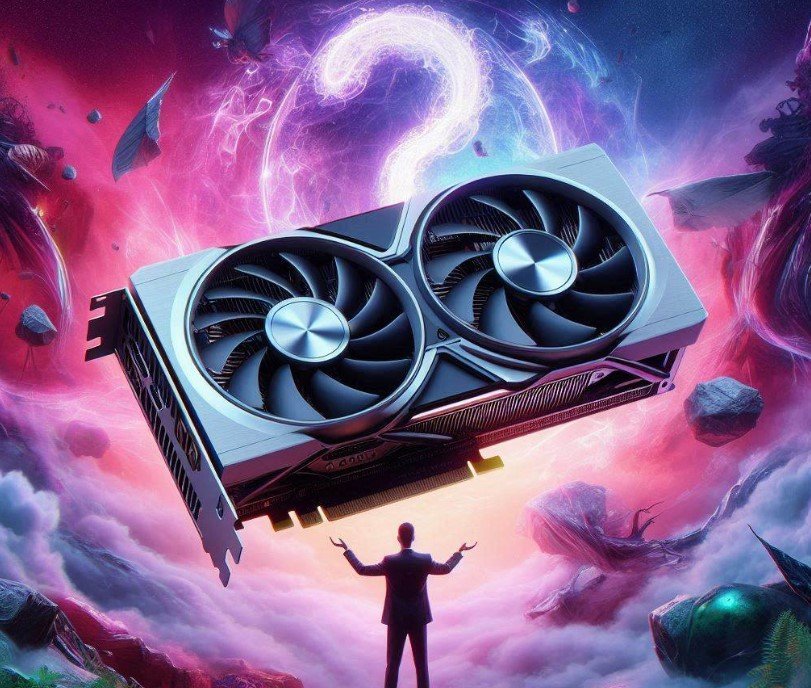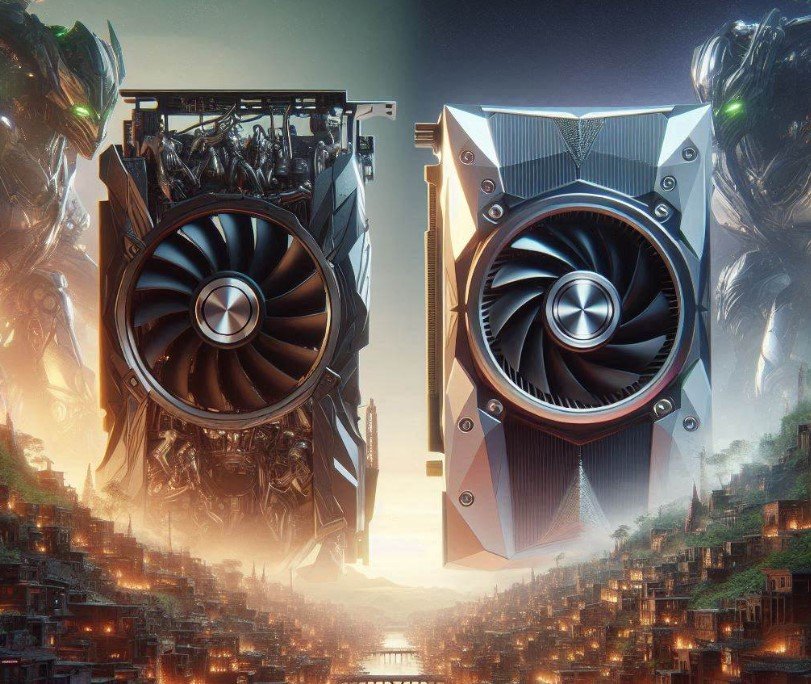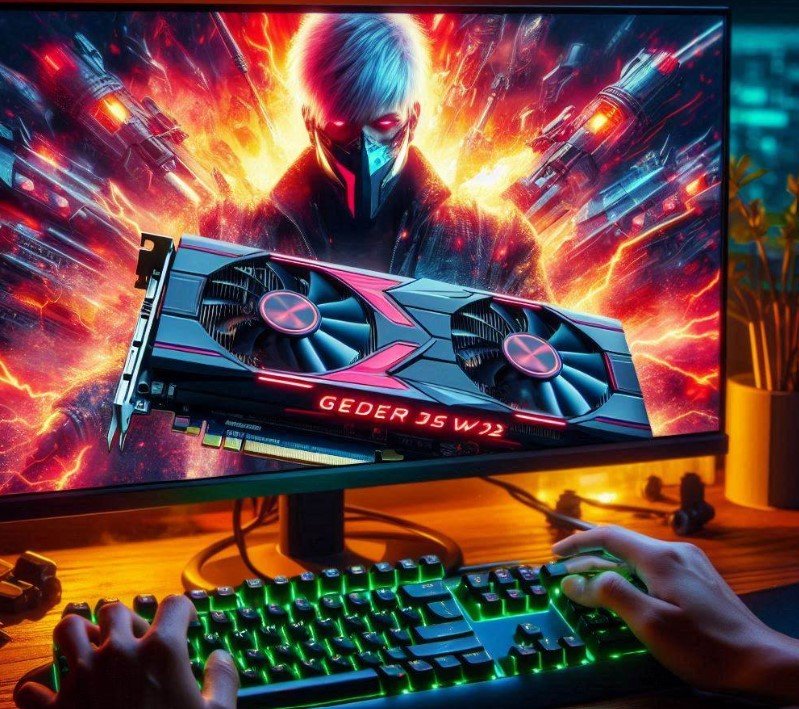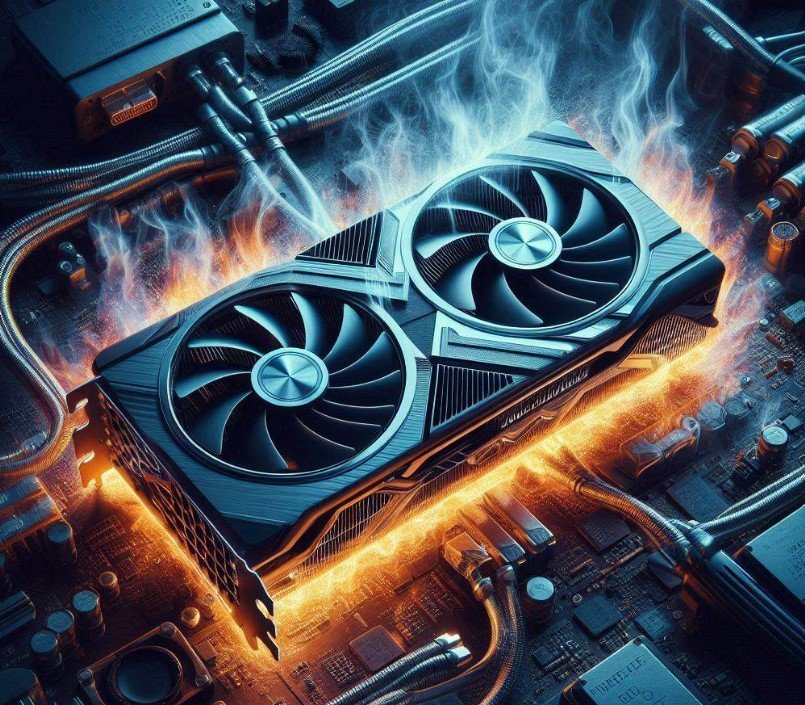Are you asking about What Is The Radeon RX 5500 XT Equivalent To? As the GPU market continues to change, look for the most recent GPU models and benchmark comparisons available on tech blogs and forums to locate the most current alternative to the NVIDIA AMD RX 5700 XT.
Remember that GPU availability varies as well, so when making a purchasing decision, you should take both availability and performance into account.
What Is The Radeon RX 5500 XT Equivalent To?
The NVIDIA GeForce RTX 2070 Super or the GeForce RTX 2060 Super would be the company’s counterpart to the AMD Radeon RX 5700 XT. These GPUs belonged to the same general price range and performed similarly.

Nevertheless, new graphics card models are regularly produced, and the GPU market is dynamic. Since then, subsequent generations of GPUs have been released by AMD and NVIDIA, including the AMD Radeon RX 6000 series and the NVIDIA GeForce RTX 30 series. Comparing these modern GPUs to their predecessors, the former offers better features and performance.
AMD Radeon RX 5500 XT Vs Nvidia GeForce GTX 1660
The NAVI 14 XTX GPU from AMD has 1408 cores, the same number as the Turing TU116-300-A1 chip from Nvidia in the GTX 1660, despite having a faster frequency of operation and more excellent peak floating-point performance (5.2 TFLOPS as opposed to 5 TFLOPS for the GTX 1660).

Though AMD packed its CPU into a considerably smaller package, the NAVI 14 XTX has 6.4 billion transistors, which is 200 million fewer than the Turing TU116. The 7nm finFET process from TSMC allows AMD’s GPU to fit on a 158 mm2 die.
Although Nvidia is using a bigger 12nm process, Turing GPUs are also produced using TSMC’s finFET process. Because of this, at 284 mm², the TU116-300-A1 is almost twice as large as the NAVI 14 XTX.
In addition, the RX 5500 XT has faster GDDR6 memory than the GDDR5 memory modules found in the GTX 1660. Although AMD has a 128-bit memory bus configuration, Nvidia has a giant 192-bit memory bus; nonetheless, the quicker memory more than offsets the bus size differential.
In theory, the NAVI 14 XTX can access a memory bandwidth of 224 GB/s, while the TU116 can only access 192 GB/s. Options for the Radeon RX 5500 XT include 4GB and 8GB.
However, the 8GB model is what we’re concentrating on in this comparison. The GeForce GTX 1660, which has 6GB of graphics memory, is positioned in the centre.
AMD’s RX 5500 XT looks to be the more powerful of the two GPUs based on the stats. It has a greater theoretical performance limit, a higher base, and boosts clock speed, and it is produced using smaller, more effective technology. Another critical benefit of faster GDDR6 memory is its larger capacity.
AMD provides the Radeon RX 5500 XT with a wide range of software functions. With the help of the company’s Radeon Software, you can keep an eye on the temperature, voltage, and speed of your GPU in addition to modifying game graphics settings, accessing performance statistics and game states, and updating GPU drivers.
Additionally, games can be launched straight from the Radeon Software dashboard with the Adrenalin 2020 edition of Radeon Software.
Along with compatibility with numerous well-known streaming services like Twitch, YouTube, Mixer, Facebook, and more, it also provides integrated media capture and game streaming tools, including screenshots, video, and fast gif capture.
Additionally, AMD has a feature called Game Boost that optimizes performance by tracking your framerate and dynamically adjusting the resolution of your games when it won’t negatively affect the visual experience.
Additionally, the Radeon RX 5500 XT is compatible with Radeon Anti-Lag, a technology that controls the amount of work supplied to the CPU and ensures the CPU cannot outperform the GPU to minimize input lag.
Additionally, to create sharper in-game graphics, Radeon Image Sharpening combines GPU upscaling with contrast-adaptive sharpening.
Gaming Performance
Eleven very demanding games were evaluated with both GPUs set to maximum and medium settings. Both cards were able to achieve 60 frames per second on average when playing games like The Division 2, Gears of War 5, Strange Brigade, Far Cry 5, Shadow of the Tomb Raider, Final Fantasy XIV, Forza Horizon 4, and Battlefield V with the graphics settings at their highest.

We had to reduce the settings to medium in order to reach the desired minimum frame rate of 60 frames per second in more demanding games like Metro: Exodus and Borderlands 3.
Ghost Recon: Breakpoint proved quite taxing, and our Radeon was unable to achieve its maximum frame rate of 50 frames per second. At its highest settings, the GTX 1660 managed an average framerate of 58.7 frames per second, barely missing the mark.
In all but two of our tests (conducted at medium settings), the GeForce beat the Radeon by a narrow margin; in the two that AMD won, the difference was less than 1%. Both cards deliver respectable performance for 1080p gaming. In our max settings tests, the GTX 1660 frequently outperformed the RX 5500 XT by 5% or more.
Which GPU Performed Best?
In a battle of power, the GTX 1660 defeated the RX 5500 XT in nearly every test we ran, even though it had better on-paper specs and comparable software capabilities.
Nvidia’s setup can handle games with the highest graphics settings enabled far better than AMD’s. Oddly, the RX 5500 XT performs better at medium settings than it does, but why would you choose medium if you don’t have to?
Power Consumption and Heat Output
Power consumption is not a significant concern in the low-cost segment of the GPU market. Not one GPU of this calibre uses nearly enough power to significantly change your system’s configuration. For each of their cards, AMD and Nvidia advise using a minimum 450-watt power supply.

The TDP of Nvidia’s GeForce GTX 1660 is 120w, while AMD’s Radeon RX 5500 XT has a 130w TDP rating. With the exception of extremely high loads, the Radeon GPUs consume less power than 130 watts in practical usage.
After testing two different RX 5500 XT variants—a 4GB Sapphire and an 8GB Gigabyte card—we discovered that the AMD card would typically draw almost 100w when playing games.
In our Metro: Exodus power test, the Zotac model we used for the Radeon RX 5500 XT review used between 110 and 120 wattage. The Gigabyte GeForce GTX 1660 sample we tried in March 2019 needed an average of 126 watts and a maximum of 134 watts.
It’s interesting to note that in our Furmark stress test, the Gigabyte sample drew over 130w, while the Zotac GeForce GTX 1660 peaked around 100w. In this test, the Gigabyte and Sapphire Radeon cards both exceeded 120w, with the Sapphire model reaching a maximum of 136w.
The power requirements for these cards won’t worry you, but as power draws increase, so does heat output, which should concern you more.
In this chapter, our Gigabyte RX 5500 XT OC 8G turned out to be one of the coolest-running GPUs we’ve observed. Our Metro: Exodus test was run three times, and the results indicated that the GPU never got above 63C.
Our tests showed that the Gigabyte GeForce GTX 1660 OC 6G got as hot as 68C. It’s also important to note that the Radeon card rotated at a leisurely 1800 rpm, whereas the GeForce’s fans spun at 2000 rpm.
AMD emerged victorious. Both of these cards have power requirements that are so low as to be insignificant. However, AMD has an advantage in this category thanks to the Radeon RX 5500 XT’s reduced heat production, which is probably helped by its smaller 7nm manufacturing.
Conclusion
Radeon RX 5500 XT is equivalent to NVIDIA GeForce RTX 2070. The RX 5500 XT GPU’s compact 158mm2 silicon packs almost 40% fewer cores and 88 texture units than the RX 5700’s.
Additionally, there are half as many ROPs, resulting in a 256-bit memory bus that is now only 128-bit wide. So, the speed of memory is cut in half, to 224 GB/s.
AMD has retained its GDDR6 memory, and the 5500 XT is available with 4 or 8GB of VRAM. In addition, we have a 5500 XT 4GB card available. We’ll compare the 4GB and 8GB versions in detail shortly, but for the purposes of this review, we’ll concentrate on the 8GB model.
People Also Ask
Is the GTX 1650 better than the RX 5500 XT?
AMD states that the RX 5500 XT (8GB) outperforms the GTX 1650 Super by about 15% to 20% while providing twice as much VRAM to support the newest, ultra-textured games. You should be able to tell more about the relative positions of the two 1080p graphics cards after using this benchmark test suite of ten games.
Is the GTX 1660 superior to the RX 5500 XT?
The Radeon RX 5500 XT has options of 4GB and 8 GB. However, we’re concentrating on the 8GB model in this comparison. The GeForce GTX 1660, which has 6GB of graphics memory, is positioned in the centre. It looks like AMD’s RX 5500 XT is the more powerful GPU.
Is the RX 5500 XT good for gaming?
The 5500xt is a fantastic low-cost video card. Nearly all games run on it at 1080p with the highest ultra settings. You’ll need to spend a little more money if you want 4K gaming, but this is the card for you if all you want to do is get your game on in a respectable setup.
Which RX 570 or RX 5500 XT is better?
The RX 5500 XT outperformed the RX 570 in numerous benchmarks using different games.






